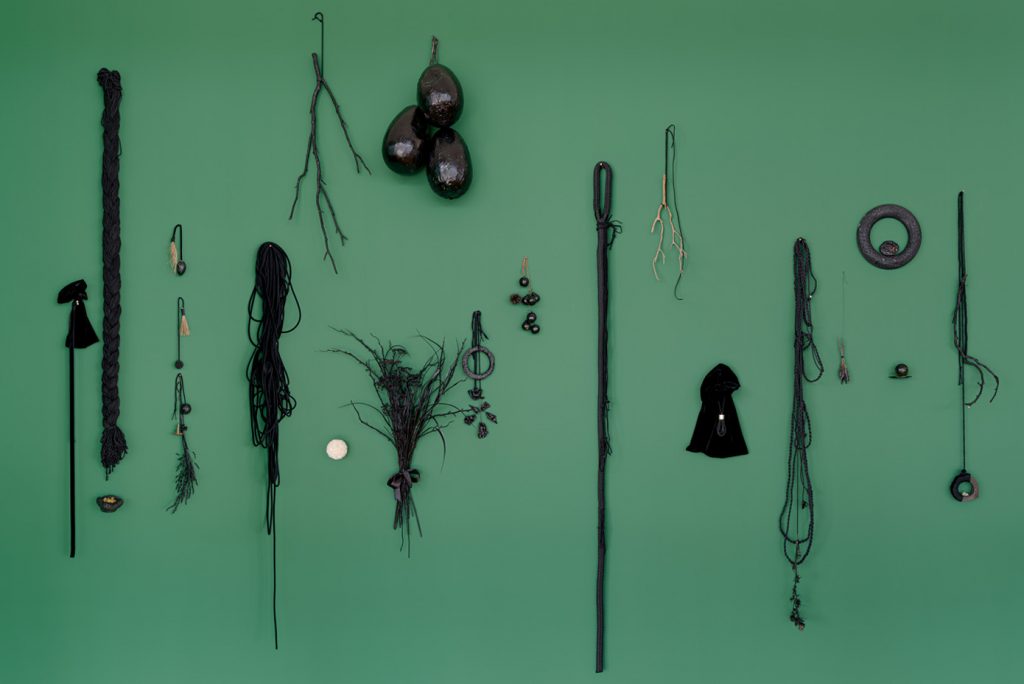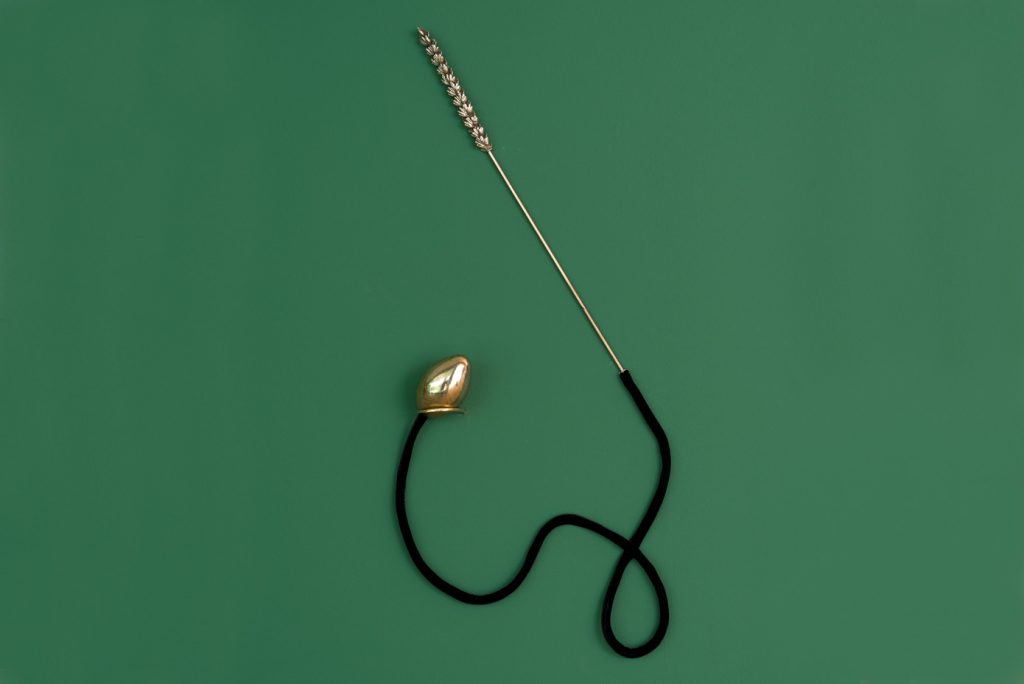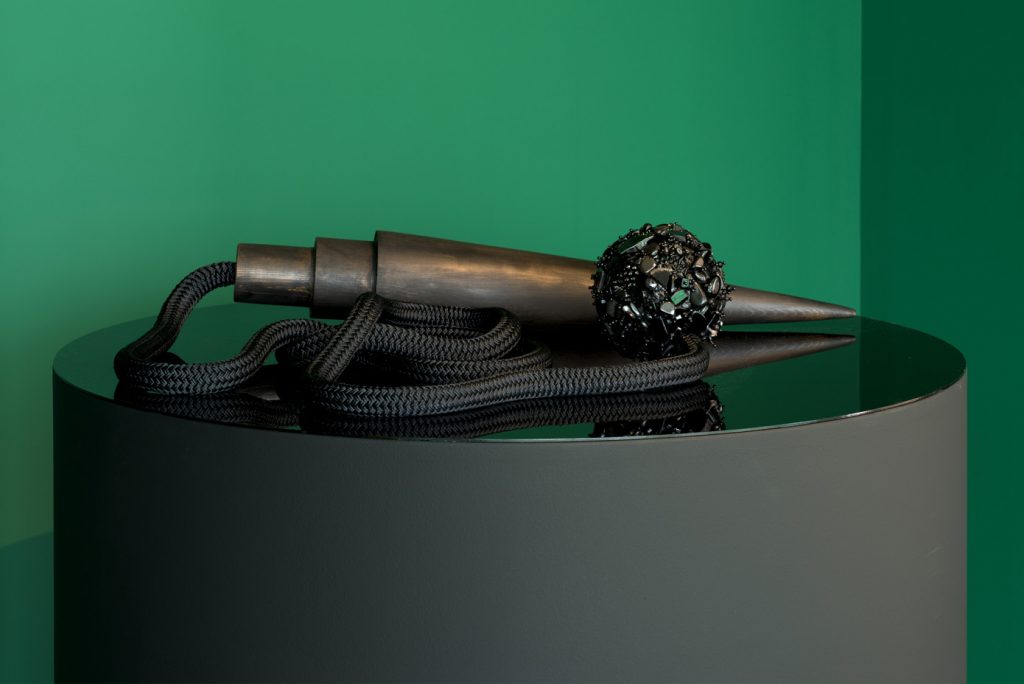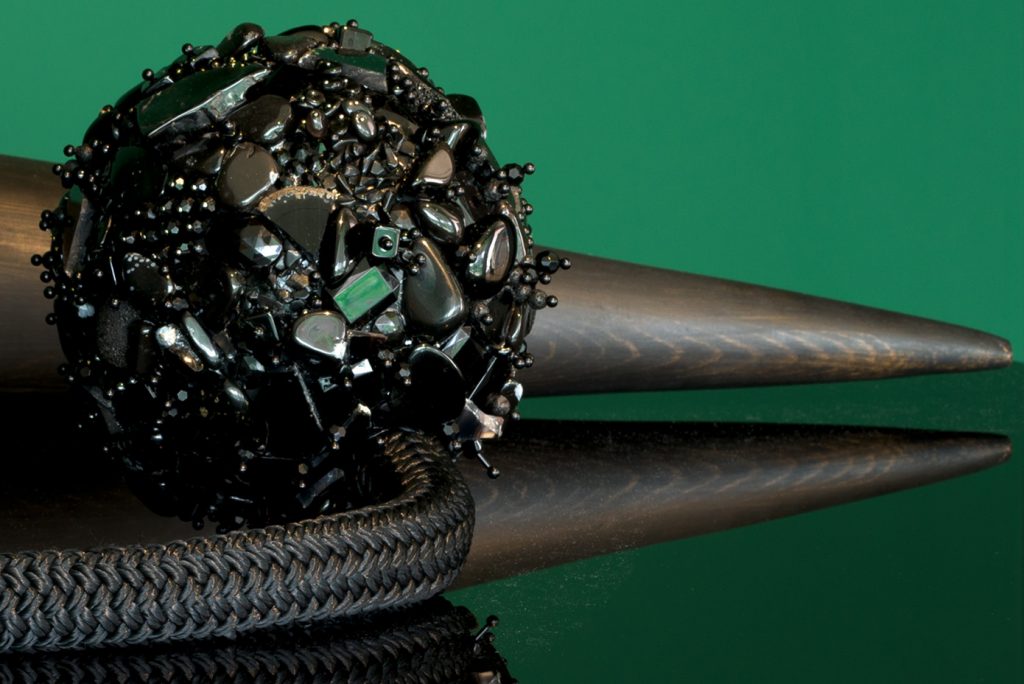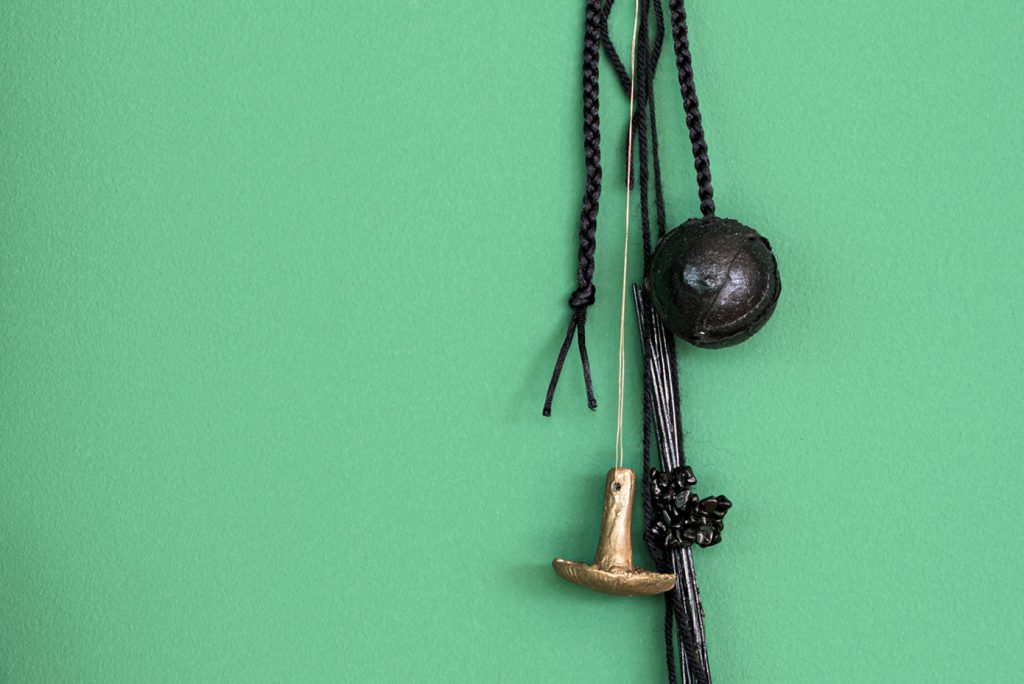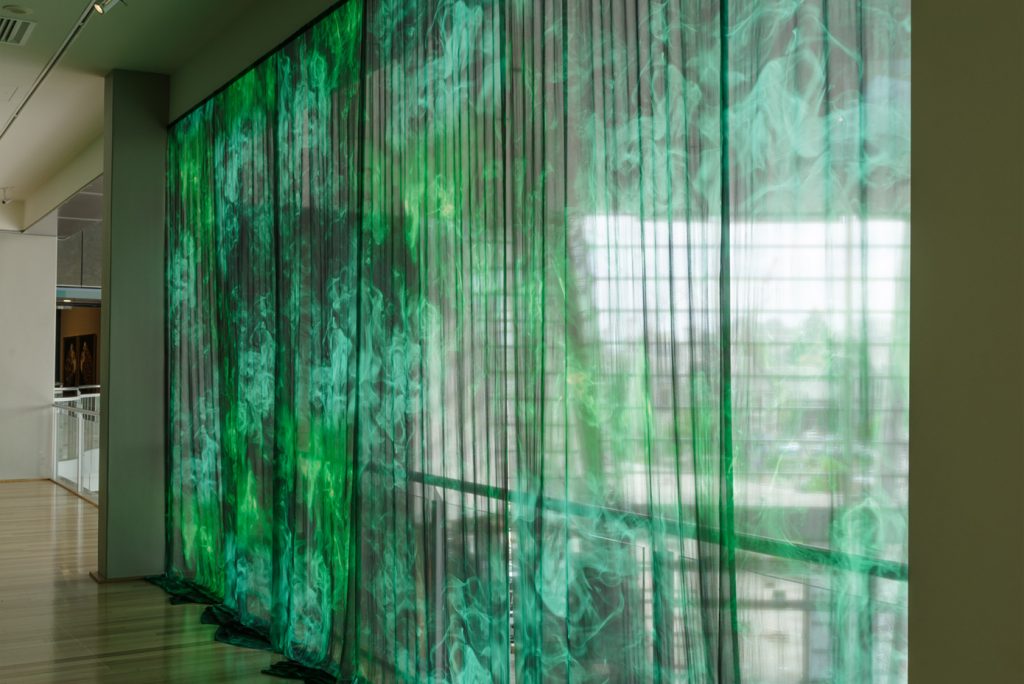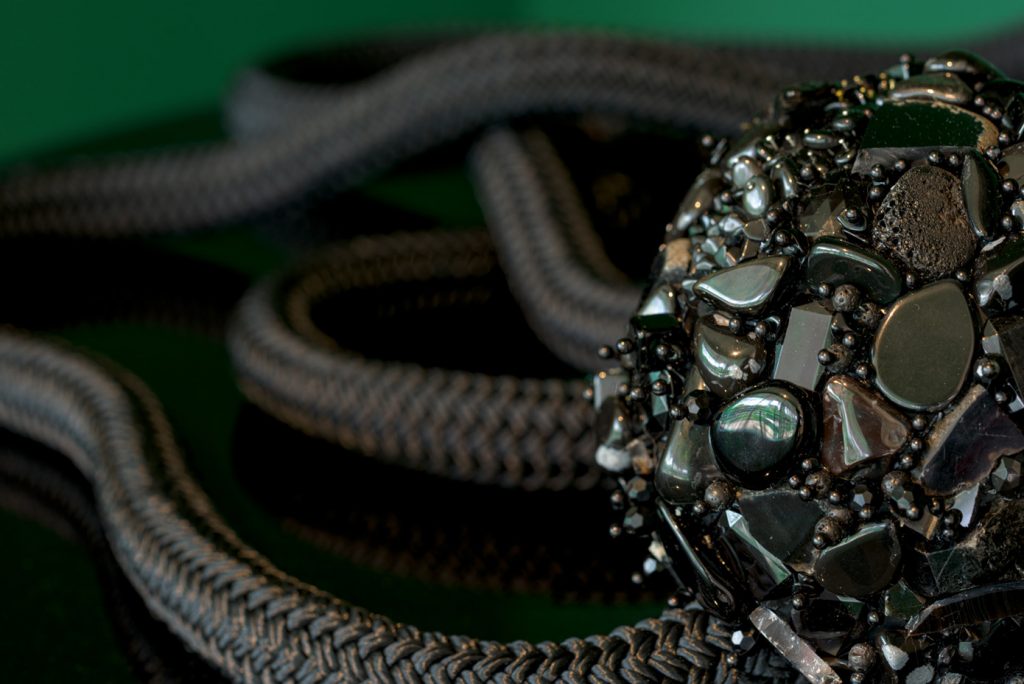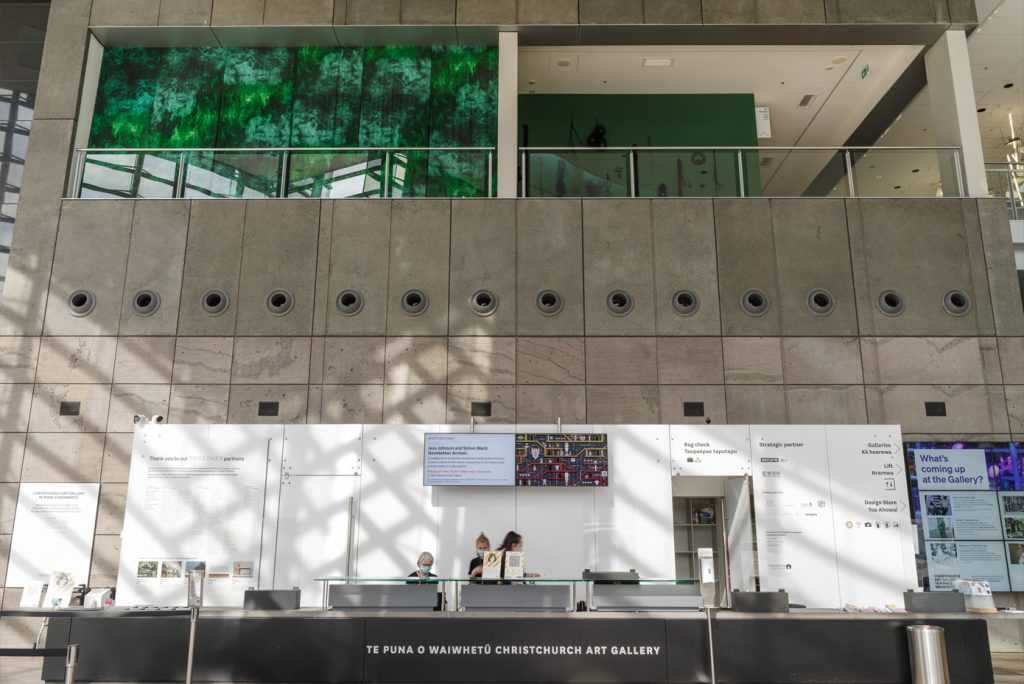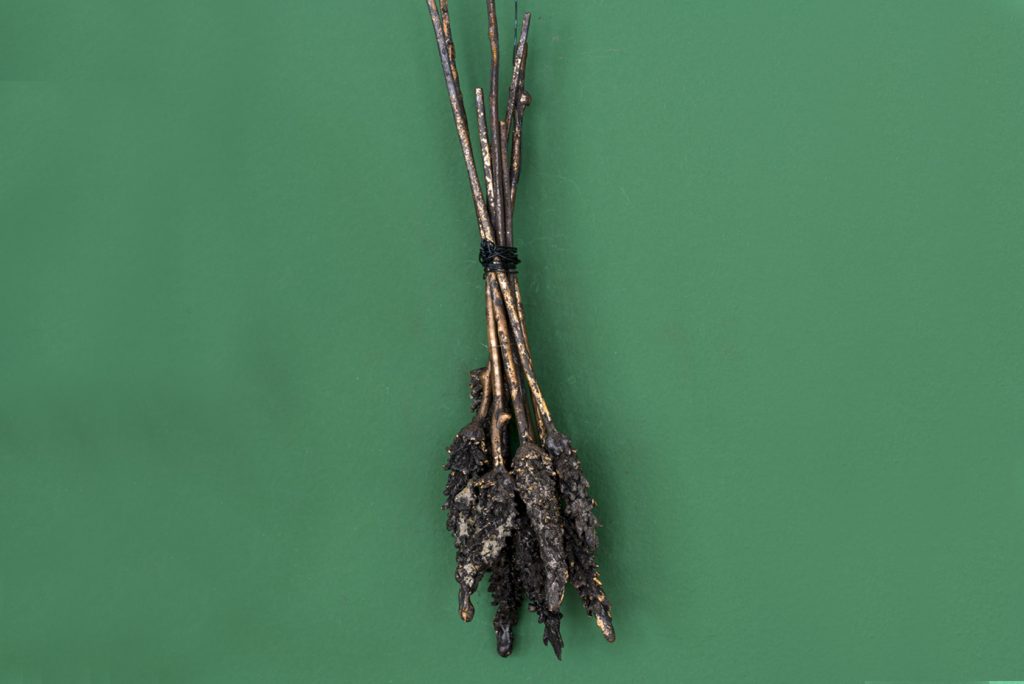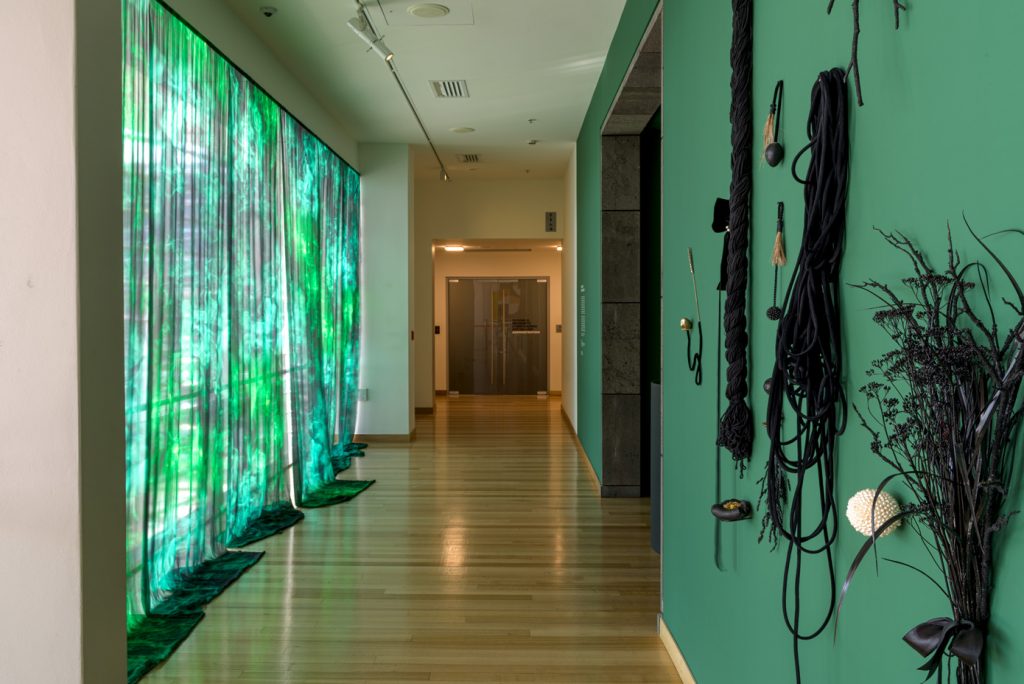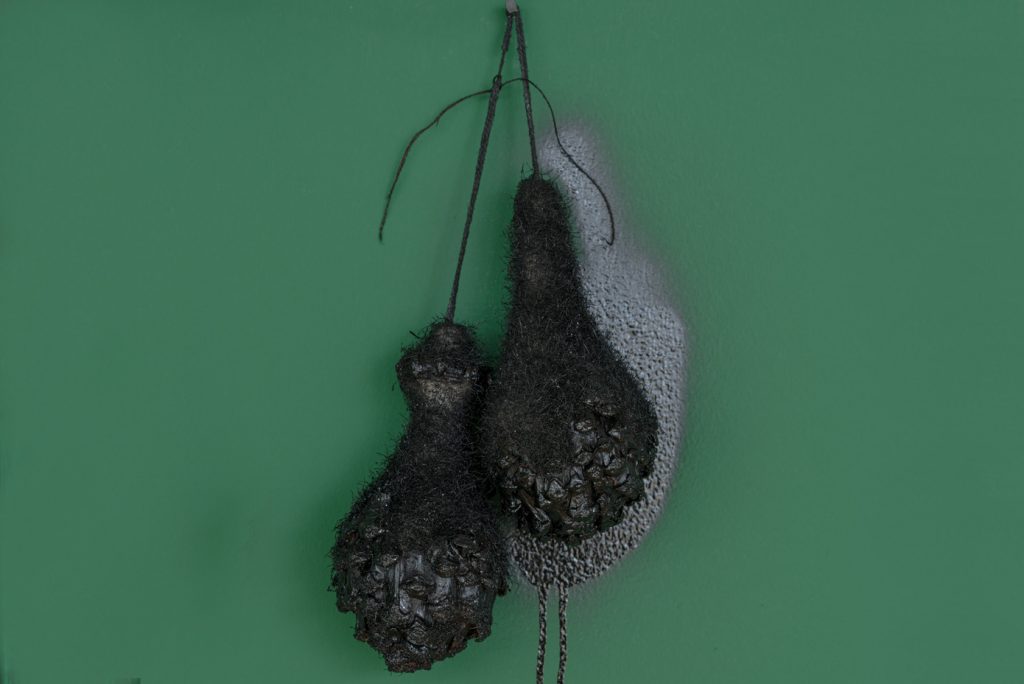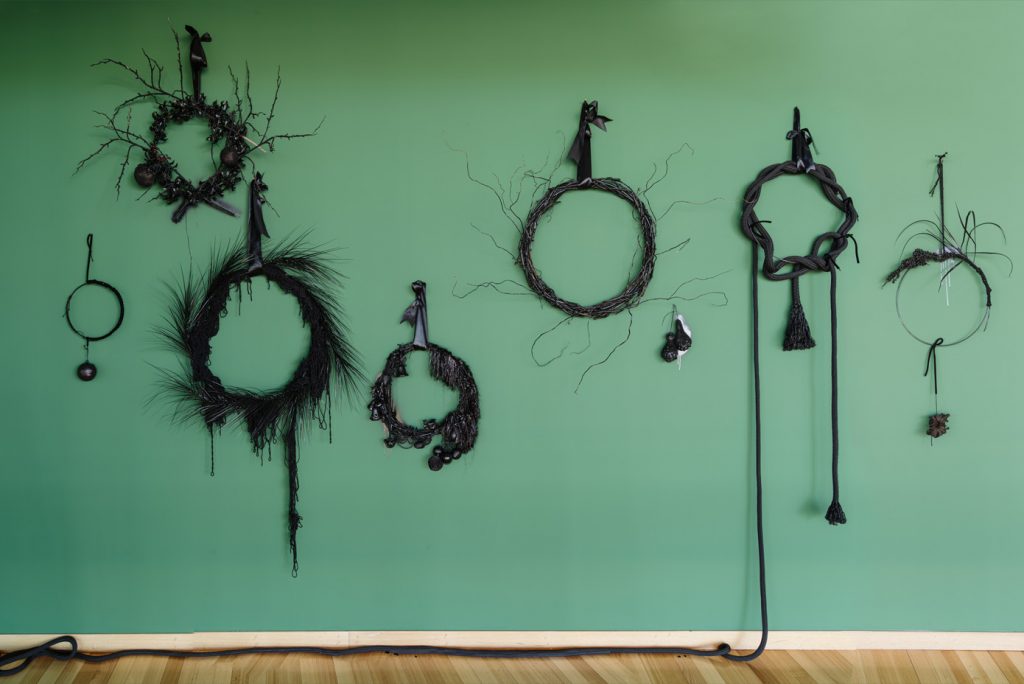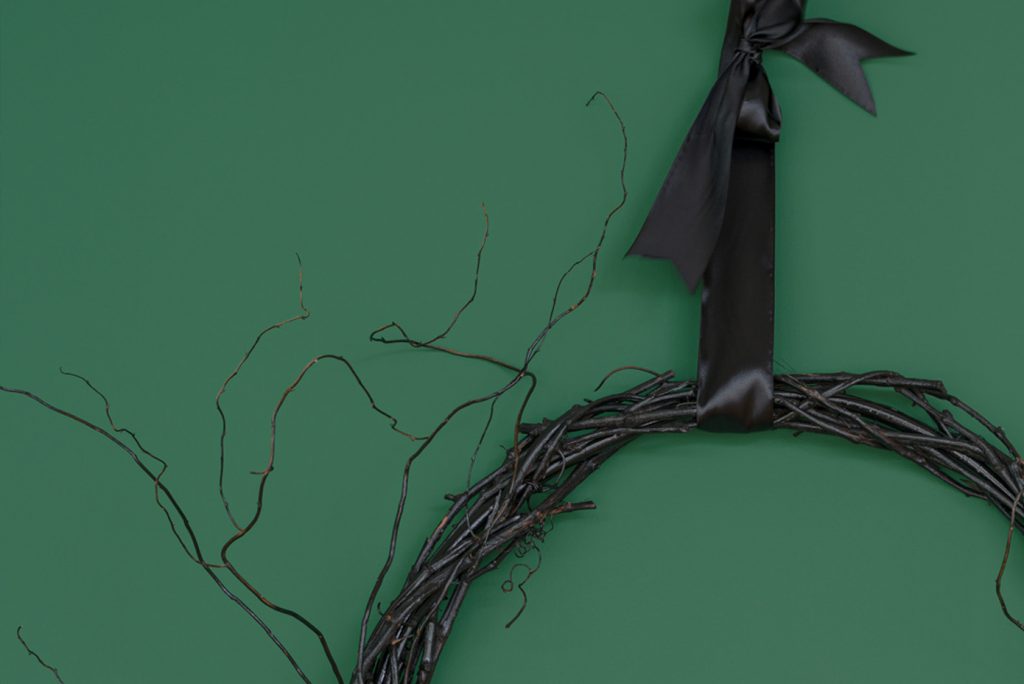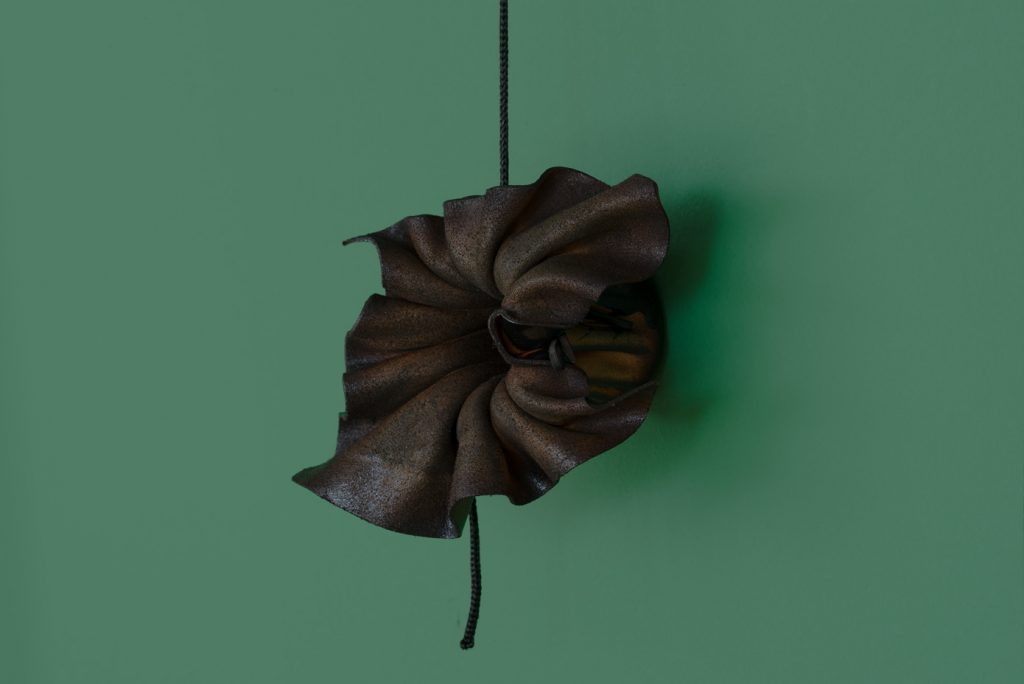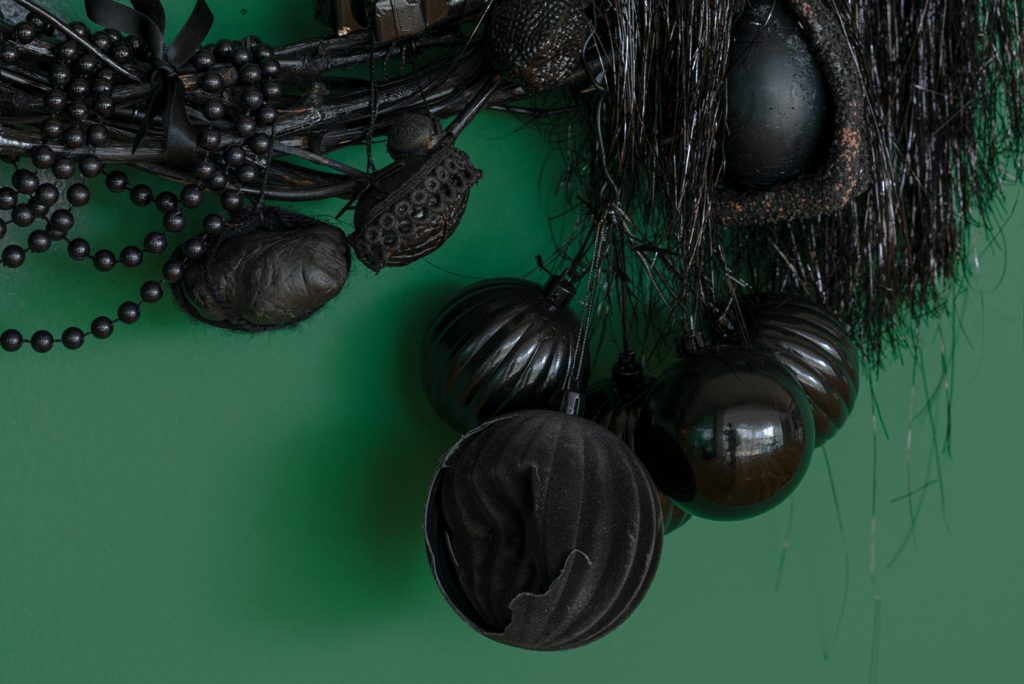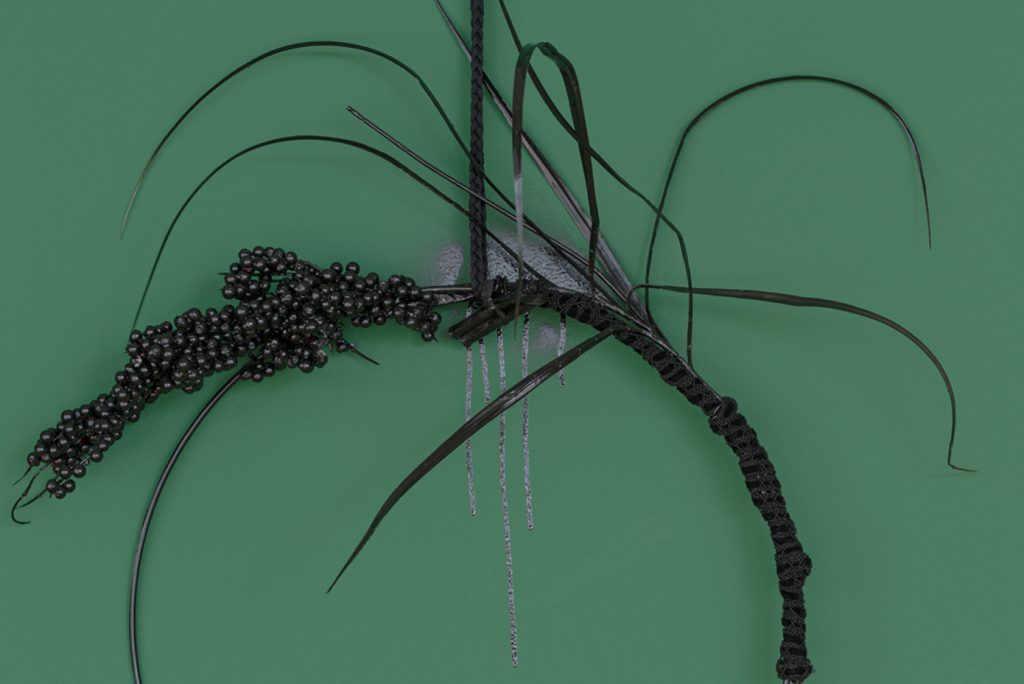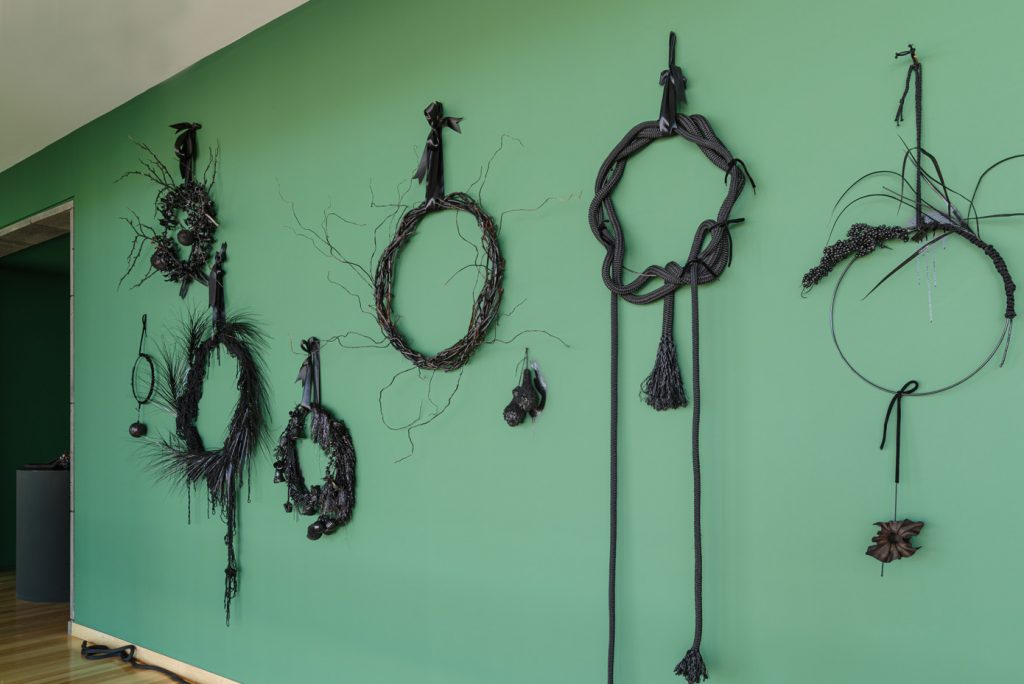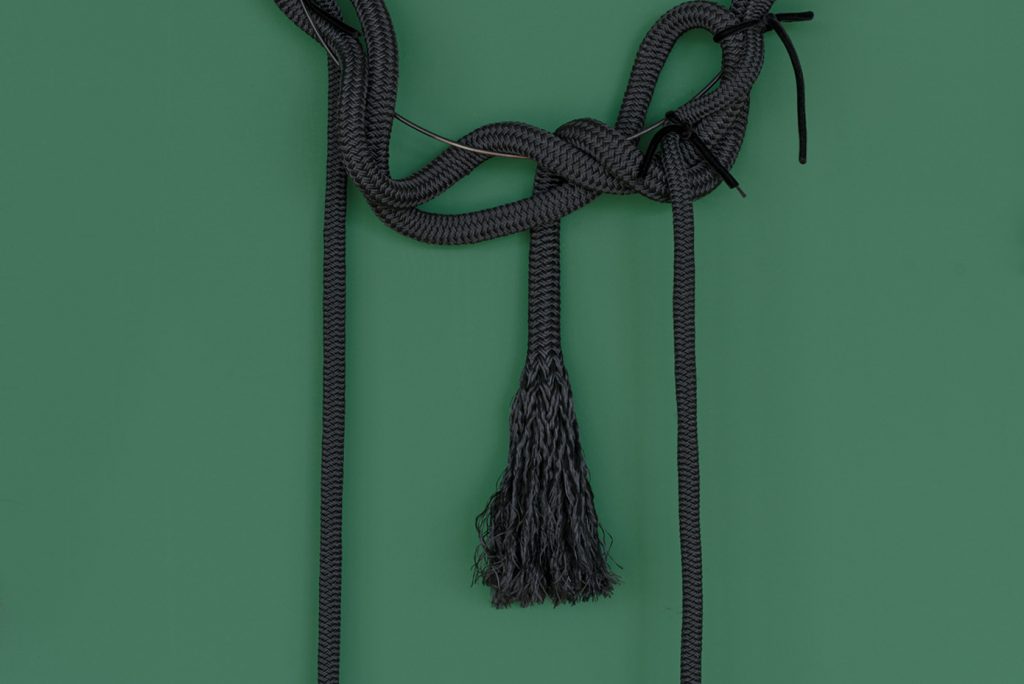When The Veil Is Thin
Christchurch Art Gallery Te Puna o Waiwhetū, Ōtautahi Christchurch
2 October 2021 – 20 February 2022 curated by Melanie Oliver
Acrylic, agate, bronze, calendular, flowers, clay, copper, dried, flowers, fabric, fire blackened cedar, foam, French glass, gem, stones, kahu feathers, lava rock, obsidian, paint, paper, pearls, plaster, plastic, pins, resin, ribbon, rope, rosehips, rye grass, sand, scotch thistle, silk, silver, silver rowan berries, smoke, Tasmanian peppercorns,Tī Kōuka fibres, velvet, wood, wool
Ōtautahi artist Jen Bowmast engages with traditions of spirituality and seasonal lore. The title for these works, When the Veil is Thin, describes a time or place when it is easier to connect with the spiritual realm. A fabric veil printed with images of smoke, a signal of the transition of matter to spirit, creates a threshold to this transitional space in the gallery and tints the light an ethereal green. On the circular plinth, a pointed listening tool encourages us to pay closer attention to our inner knowledge and unseen forms of communication. Attached to this tool by a snaking rope is a jewel-encrusted sphere that the artist made as an act of incantation, imbuing the work with the time and labour of its making as well as inherent powers of the materials. And along the adjacent goblin green wall hang wreaths, sticks and ritualistic objects, both aesthetic and useful things.
The sculptures offered here are variations on symbols and ideas common to the Samhain and Yule festivals in the pagan Wheel of the Year. Part of a European heritage, this nature-based belief system has often been relegated to the feminine and denigrated as myth, despite many aspects being absorbed into more familiar Christian and secular festivities. Many other cultures and communities have spiritual practices that are grounded in nature, including te ao Māori. Connecting with an ecofeminist form of worship that harks back to ancient European practices, Bowmast challenges the patriarchal, postcolonial structures that continue to dominate our understanding of the world today and suggests there are other ways of seeing and knowing–if we are prepared to look.
As the season changes, When the Veil is Thin will too, with a new iteration in December launching alongside an artist book and other festivities.
Photography courtesy of Christchurch Art Gallery Te Puna o Waiwhetū
